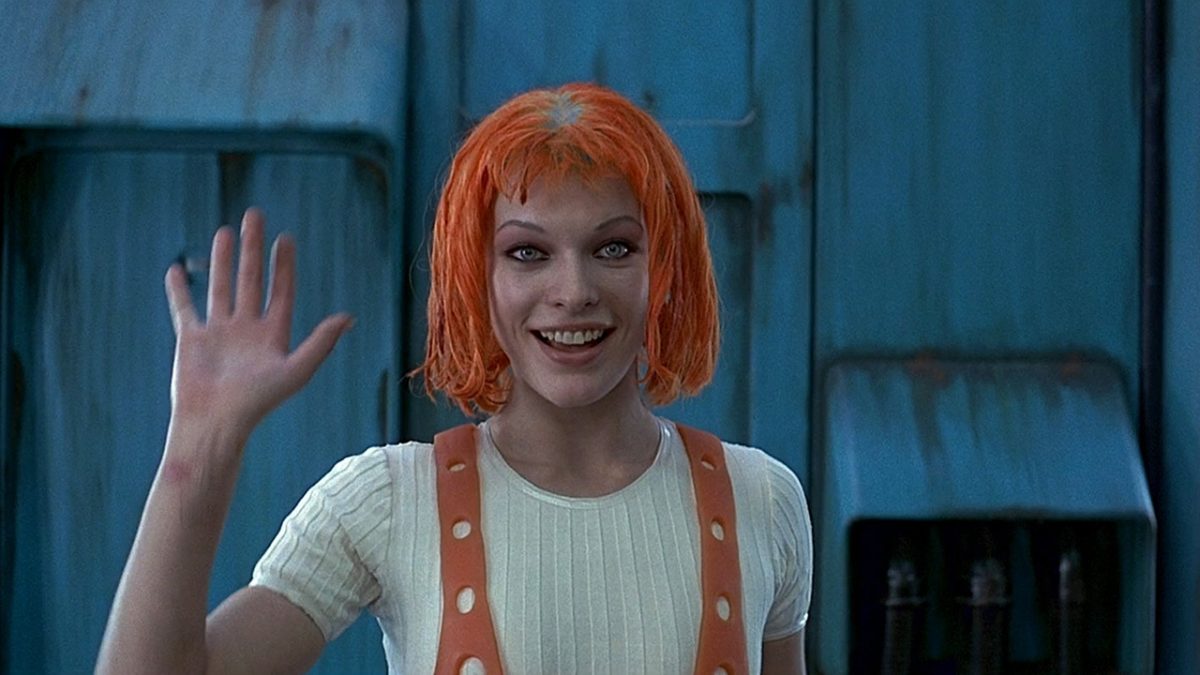The 5th Element

Le 5e élement
Luc Besson
France – 1997

Screenplay: Luc Besson, Robert Mark Kamen
Cinematography: Thierry Arbogast
Production: Gaumont
Language: English, Swedish, German
Duration: 126 min
Color: Color
Synopsis: Life in the universe is fragile thing, and it is periodically threatened by all-consuming pure Evil. In the twenty-third century the only hope for mankind is the Fifth Element, an alien force that comes to Earth every five thousand years to repel the darkness. When the aliens’ spacecraft is destroyed, a team of scientists regenerate the Fifth Element creature from its DNA remains, and the result is a being of uncanny grace called Leeloo. She escapes from the laboratory and stumbles upon the taxi driver and former elite commando Korben Dallas who helps her escape. Leeloo has allies on Earth, but so does Evil. The greedy and cruel industrialist Jean-Baptiste Emanuel Zorg and his team of mercenary mutants do their best to frustrate Leeloo and Korban’s efforts to stop the spread of lifeless chaos. In the end, however, love proves to be the ultimate weapon, and it comes in limitless supply.
Notes: Shot in 3.25:1 ‘scope’ aspect ratio, The Fifth Element is a virtuosity of vertical and horizontal lines – the very mechanics and interiority of film, according to Besson. The visuality of the film is deliberately non-illusionist, but ‘in your face’ and two-dimensional. A two-dimensionality we are already familar with in Besson’s work especially since Nikita, when he teamed up with Thierry Arbogast as the cameraman. We can recall his and Besson’s predilection, with Nikita and Léon, for low-light shooting and the consequent effect on choice of shots – mostly medium and medium dose-ups, which in scope aggressively brings the image into the face of the spectator, thus calling attention to the two-dimensionality of scope. This flattening of the image which is the effect of scope is heightened, as always in a Besson film, by the strong influence of the graphic novel (bande dessinée) on his work. Besson worked with eight cartoonists to achieve the effect he wanted, but most particularly he turned to one of France’s best-known adult comic book artists, Jean Giraud, to design the decors for his futuristic film. Giraud, whose work encompasses both the western and the sci-fi genres, is also no stranger to film. His influence can be seen in The Empire Strikes Back (Irvin Kershner, 1980) and Blade Runner (Ridley Scott, 1982), and he did the costumes for Alien (Ridley Scott, 1979), and the drawings for René Laloux’s Maîtres du Temps (1982). In France, the artist is known for his collaborative work with the late Jean-Michel Charlier with whom he produced the widely admired western series of graphic novels, Lieutenant Blueberry. Giraud also worked in the sci-fi genre, this time under the pseudonym Moebius, and amongst other comic books produced Cinquième Essence which he published under the parodically named press company Editions des Humanoides.
Excess in decor is matched by excess in clothes-design and in the sashaying performances of several male characters, most particularly Ruby Rhod who is an extraordinary hybrid of Ruby Wax and Prince. The effect of the world of fashion design brought by the costumes of Jean-Paul Gaultier, the master of excess and camp, leaves its traces all over the film as indeed does the impact of the futuristic decor designed by Jean Giraud. Gaultier’s high-camp meets Giraud’s surreal masculinist decors.
Excerpt drawn from Hayward, Susan. 1998. Luc Besson. Manchester University Press.


